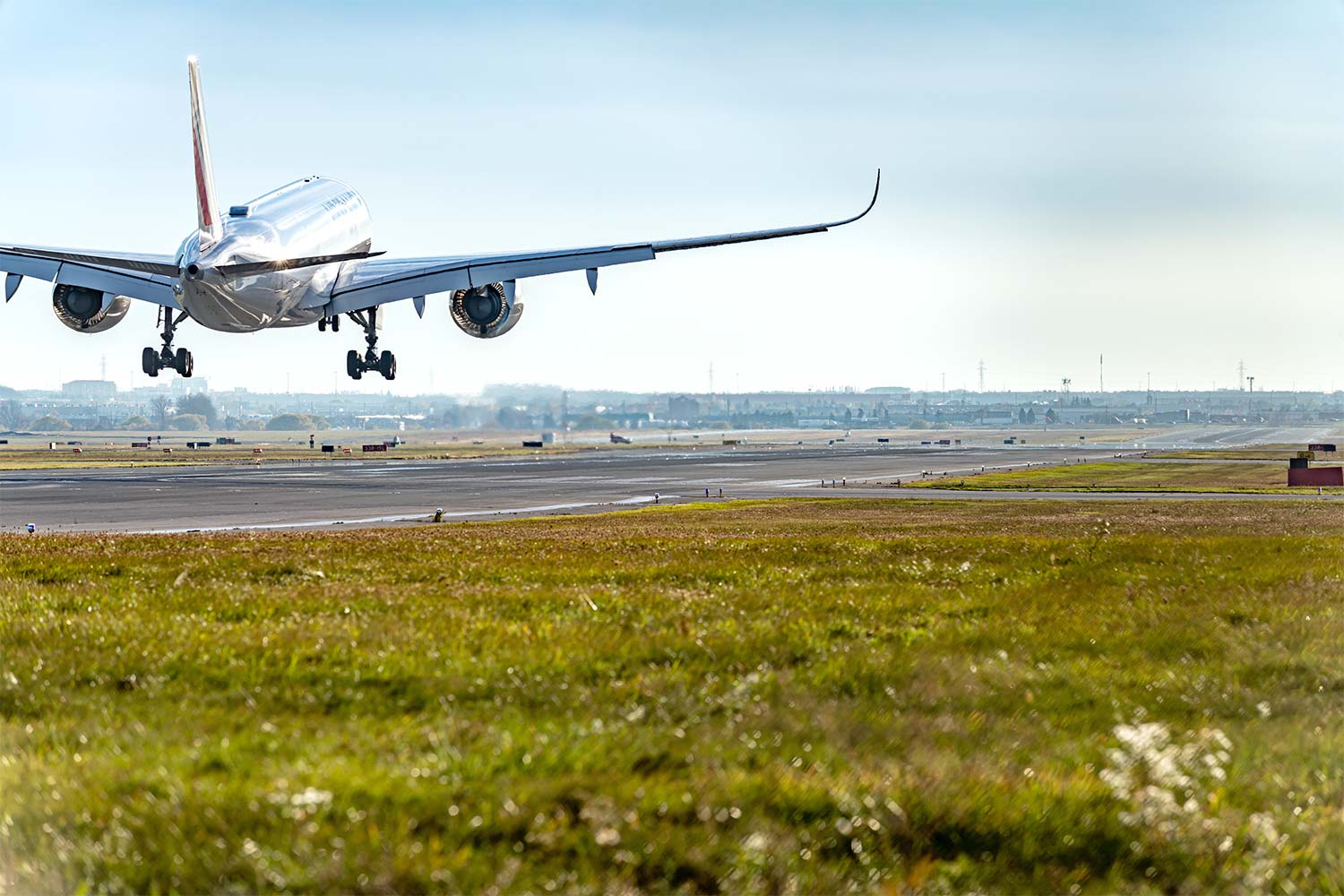
The airplane slowly taxis onto the runway, and its jet engines humming before igniting with immense force. As it accelerates to 200 km/h (124 mph), the pressure difference above and below the wings reaches its peak, generating lift force1. The moment the lift force surpasses gravity, the massive 400-ton aircraft ascends effortlessly into the sky. With a smooth climb, the plane soars upward, leaving the ground behind as the vast expanse of the sky unfolds in breathtaking view. Soon, it reaches cruising altitude, gliding steadily through the heavens.
1. An upward force that counteracts gravity. It is generated by the movement of air from high to low pressure, enabling an airplane’s wings to lift the aircraft into the sky.
The safe operation of an airplane depends on favorable weather conditions, meticulous maintenance, and an optimal runway. Runway conditions, in particular, are unpredictable and require constant vigilance up to the moment of takeoff. If sudden rain or snow reduces the runway’s friction coefficient2 below 0.25, takeoffs and landings are strictly prohibited. Even small debris—such as tire fragments, bolts, stones, or branches—can pose a severe risk to flight safety. In fact, minor debris has directly caused major aviation disasters.
2. A numerical measure of the resistance between two surfaces in contact. A lower value indicates increased slipperiness.
On July 25, 2000, an aircraft departing from Charles de Gaulle Airport in France crashed just 88 seconds after takeoff, tragically killing all passengers and crew. Investigators determined that a mere 40-centimeter metal fragment on the runway triggered the catastrophe. As the aircraft’s tire struck the debris, it burst, sending fragments into the fuel tank and igniting a fire within moments.
Recognizing the dangers even the smallest foreign object on a runway can pose, airports worldwide prioritize debris removal. Advanced systems such as precision radar and optical cameras are in place, alongside dedicated personnel and specialized vehicles that regularly inspect and clear runways.
Just as airplanes require a smooth runway to take flight, our journey to heaven depends on the path God prepares for us. With His mighty hand, He clears obstacles, raises valleys of sorrow, and levels mountains of suffering, making our way secure. Though His labor and love may go unnoticed, He works ahead of us, ensuring that today we walk on the holy road He has paved through sacrifice. Let us press forward with unwavering faith, overcoming the gravity of worldly attachments and desires, until the day we soar with strength into His eternal glory.
“The burning sand will become a pool, the thirsty ground bubbling springs. In the haunts where jackals once lay, grass and reeds and papyrus will grow. But only the redeemed will walk there, . . . and those the Lord has rescued will return. They will enter Zion with singing; everlasting joy will crown their heads. Gladness and joy will overtake them, and sorrow and sighing will flee away.” Isaiah 35:7–10